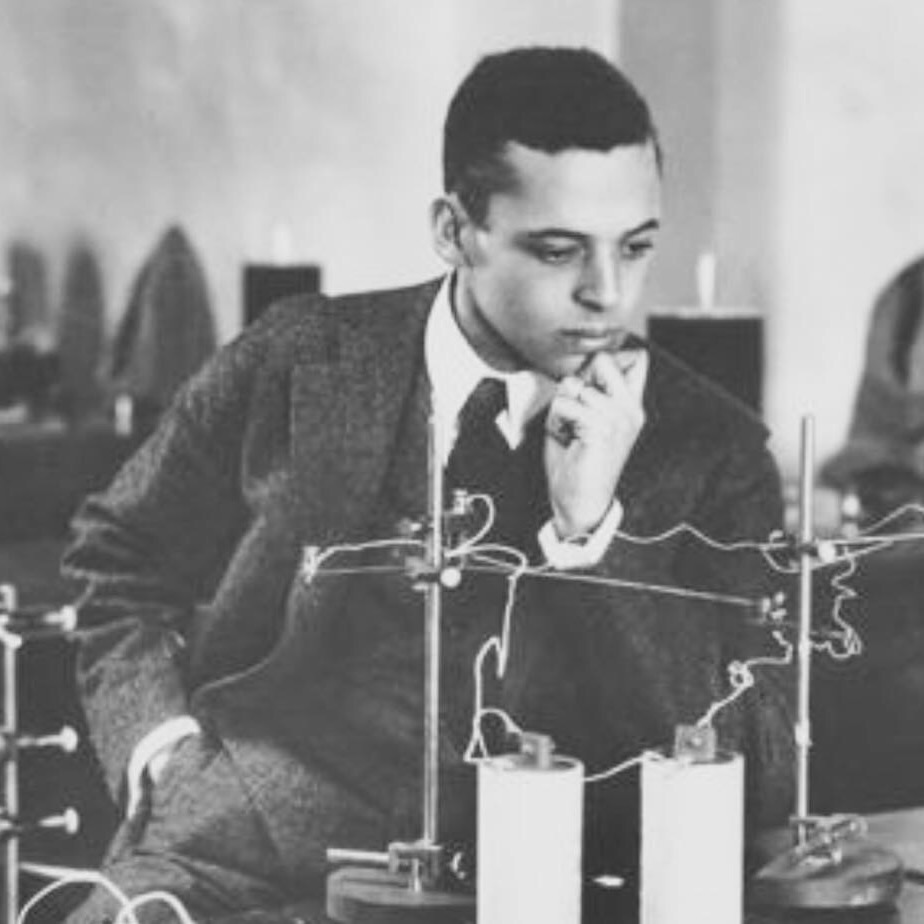Dr. Just is remembered as an internationally respected experimental biologist and for his work on the cell biology of fertilization.

Ernest Everett Just, Ph.D.
(1883-1941)
Dr. Just earned his Bachelor’s degree from Dartmouth College in 1907, where he was the only member of his class to graduate magna cum laude. He was hired by Howard University to teach rhetoric and English. During his time there, he helped to found the Omega Psi Phi fraternity (the first predominantly African-American fraternity), and in 1910, he was placed in charge of the new Biology department.
Beginning in 1909, he spent almost every summer conducting research at the Marine Biological Laboratory at Woods Hole, under the mentorship of Frank Lillie. He began his graduate studies there, where he quickly became highly respected for his expert skill with his hands and his understanding of good experimental design. He continued his studies with Lillie at the University of Chicago, earning his Ph.D. in 1916.
Despite his reputation and talent, Dr. Just was unable to find a professorship at a major U.S. university because of his race. Frustrated by this, he traveled to Europe, working first in Naples (Italy) and then at the Kaiser Wilhelm Institute in Berlin. After 1933, when the Nazis rose to power, he moved his lab to France. He was briefly a prisoner of war in 1940, after Germany invaded France, but was quickly rescued and returned home to the U.S. He died shorted afterward.
Dr. Just published two textbooks during his lifetime — one on methods for working with the eggs of marine animals and one on cell structure. His 70+ papers are still widely cited in work on fertilization and early embryonic development.
Fertilization is the process during which a single egg cell and a single sperm cell fuse and become a zygote. It is critical that only one sperm fertilizes each egg, because the sperm and egg each contain half of a full set of DNA. Thus, an egg fertilized by two sperm would have 1.5 times the full genome and that zygote would not survive more than a couple of hours.
(To help understand how detrimental it would be to have 150% the normal genome content, it helps to think about Down’s syndrome: DS is caused by an extra copy of chromosome 21, one of the smallest chromosomes. Patients with DS have only 101.5% of the typical genome content.)
Because polyspermy (too many sperm fertilizing an egg) causes embryos to die, animals have evolved two processes to prevent it.
The slow block to polyspermy, discovered in the late 1800s, involves the egg shedding the vitelline envelope, which contains docking sites for sperm to attach. Once a sperm has fused with the egg, it triggers a multi-step chemical reaction that severs the connections between the egg and its vitelline envelope. Once this has occurred, no new sperm can attach to the envelope and begin to fuse with the egg.
One of Dr. Just’s biggest contributions was the discovery of a second, fast block to polyspermy. Because there is a delay between the beginning of the slow block and the release of the vitelline envelope, sperm that had already bound to the vitelline envelope could potentially still begin to fuse with the egg during that lag.
For marine animals (but not for mammals), the fast block involves quickly opening sodium channels and letting sodium flood into the egg. This changes the electric current of the egg membrane — thus, any sperm attached to the vitelline envelope are repelled (like magnets) from the egg membrane itself. The fast block is does not last very long, but it stalls any bound sperm long enough for the slow block to kick in.